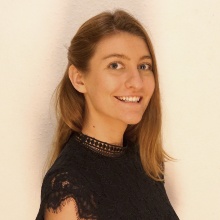Contact
Keplerstraße 11
70174 Stuttgart
Deutschland
Jakstis, K., Dubovik, M., Laikari, A., Mustajärvi, K., Wendling, L., & Fischer, L. K. (2023). Informing the design of urban green and blue spaces through an understanding of Europeans' usage and preferences. People and Nature, 5(1), 162-182. https://doi.org/10.1002/pan3.10419
Jakstis, K., & Fischer, L. K. (2021). Urban Nature and Public Health: How Nature Exposure and Sociocultural Background Relate to Depression Risk. International Journal of Environmental Research and Public Health, 18(18), 9689
Donovan, G. H., Gatziolis, D., Jakstis, K., & Comess, S. J. H. P. (2019). The natural environment and birth outcomes: Comparting 3D exposure metrics derived from LiDAR to 2D metrics based on the normalized difference vegetation index. Health Place, 57, 305-12.
Weilhoefer, C. L., Williams, D., Nguyen, I., Jakstis, K., & Fischer, C. (2017). The effects of reed canary grass (Phalaris arundinacea L.) on wetland habitat and arthropod community composition in an urban freshwater wetland. Wetlands ecology and management, 25(2), 159-175.
Weilhoefer, C. L., Jakstis, K., & Fischer, C. (2017). Response of primary producer communities to short-term nutrient additions in a Pacific Northwest estuarine tidal wetland. Wetlands, 37(4), 687-696.
Born and raised in the USA, Kristen Jakstis studied Environmental Science (BSc) at the University of Portland in Portland, Oregon (2016). After spending a year in Germany as a Fulbright scholar, she continued her education in Germany and received her MSc in Forest Sciences from the University of Freiburg in 2020. Throughout her Master and during an internship with the United States Forest Service Research Laboratory, she developed an interest in urban greenness and biodiversity and its relationship with human health. Kristen is continuing her research in this field, and since June 2020 she is a phd student and scientific employee contributing to the UNaLab project at the Institute for Landscape Planning and Ecology.


